Ayodhya is a city with its ancient roots, is a city that continues to captivate the hearts and minds of people worldwide. Beyond controversies and disputes, Ayodhya stands as a symbol of India’s unity in diversity. As the Ram Mandir takes shape on the Ram Janmabhoomi, Ayodhya embarks on a new chapter, carrying its rich heritage into the future.
The city’s timeless allure, shaped by myth, history, and spirituality, ensures that Ayodhya remains a beacon of faith, history, and harmony for generations to come.
Where is Ayodhya located?
The city is situated along the banks of the holy River Sarayu in the northern Indian state of Uttar Pradesh, Ayodhya holds a special place in the hearts of millions of people around the world. The city was historically known as Saketa. Ayodhya is belief as the birthplace of Ram, Ayodhya has been regarded as the first of the seven most important pilgrimage sites for Hindus.
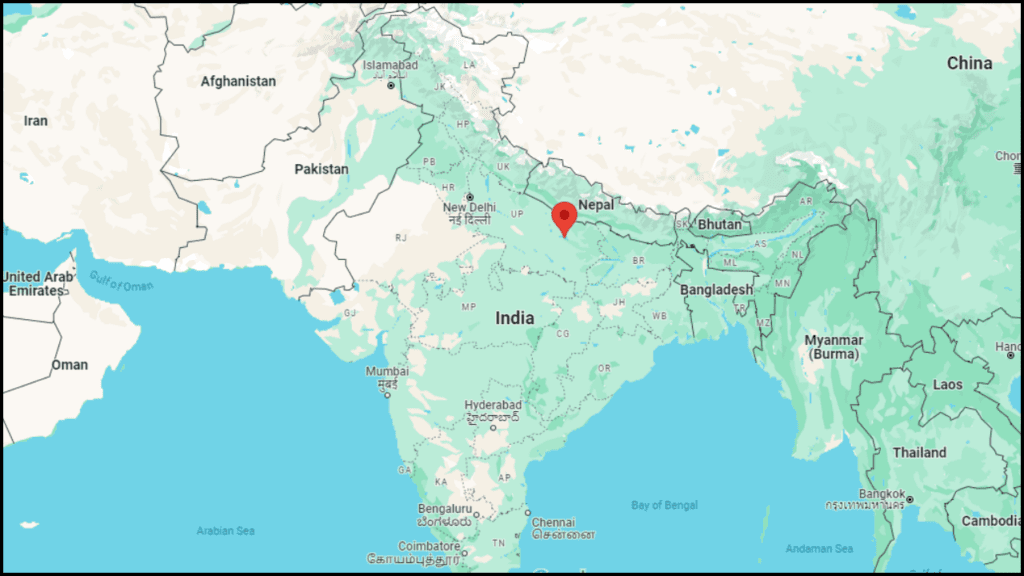
It is believed that a Mandir stood at the supposed birth spot of Ram, which was demolished by the orders of either the Mughal emperor Babur or Aurangzeb, and a mosque was erected in its place. In the year 1992, the dispute over the spot led to the demolition of the mosque by Hindu mobs, who aimed to rebuild a grand Mandir of Ram at the site.
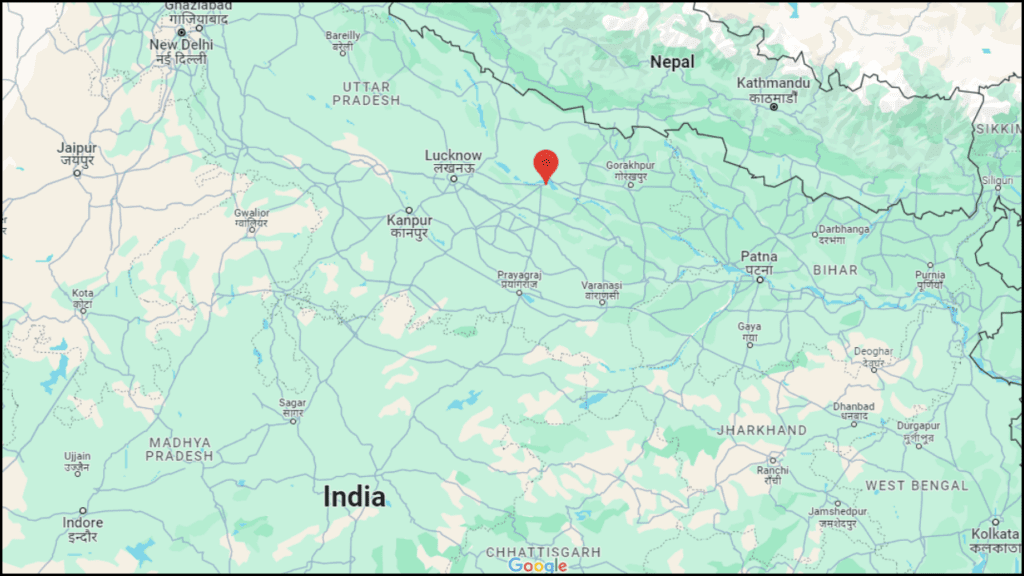
A five-judge full bench of the Supreme Court heard the title cases from August to October 2019 and ruled that the land belonged to the government as per tax records, and ordered it to be handed over to a trust to build a Hindu Mandir. It also ordered the government to give an alternative 5 acres of land to the Uttar Pradesh Sunni Central Waqf Board to build a mosque instead of the demolished Babri mosque. The construction of Ram Mandir started in August 2020.
History of City
Ayodhya’s origins are deeply rooted in Hindu mythology. According to the ancient epic Ramayan, Ayodhya was founded by the legendary King Manu, and it later became the capital of the illustrious Ikshvaku dynasty. However, Ayodhya’s prominence in Hinduism is primarily associated with the birth of Lord Ram who was the seventh incarnation of Lord Vishnu. It is believed that Ram, along with his devoted wife Sita and loyal companion Hanuman, lived in Ayodhya, and the city became the backdrop for the epic tale of Ramayana.
Ayodhya is not only a pilgrimage site for Hindus but also holds significance for followers of other religions. The city is home to various religious sites, including Mandirs, mosques, and churches, reflecting the religious diversity that has evolved over centuries. Beyond the Ram Janmabhoomi, the city boasts numerous other Mandirs dedicated to various deities, making Ayodhya a melting pot of spiritual beliefs.
Why Ayodhya is famous?
Ayodhya, also known as Saket, is an ancient city of India and is the birthplace of Bhagwan Shri Ram and the setting of the great epic Ramayana. Owing to the belief as the birthplace of Bhagwan Shri Ram, Ayodhya also called Awadhpuri has been regarded as one of the seven most important pilgrimage sites for Hindus.
The Ram Janmabhoomi
One of the most significant aspects of Ayodhya is the Ram Janmabhoomi, the sacred birthplace of Lord Rama. The Babri Masjid, built in the 16th century, stood at this site for centuries. However, the disputed nature of the land led to a prolonged legal and socio-political struggle. In 2019, the Supreme Court of India finally settled the dispute, allowing for the construction of the Ram Mandir at the Ram Janmabhoomi.
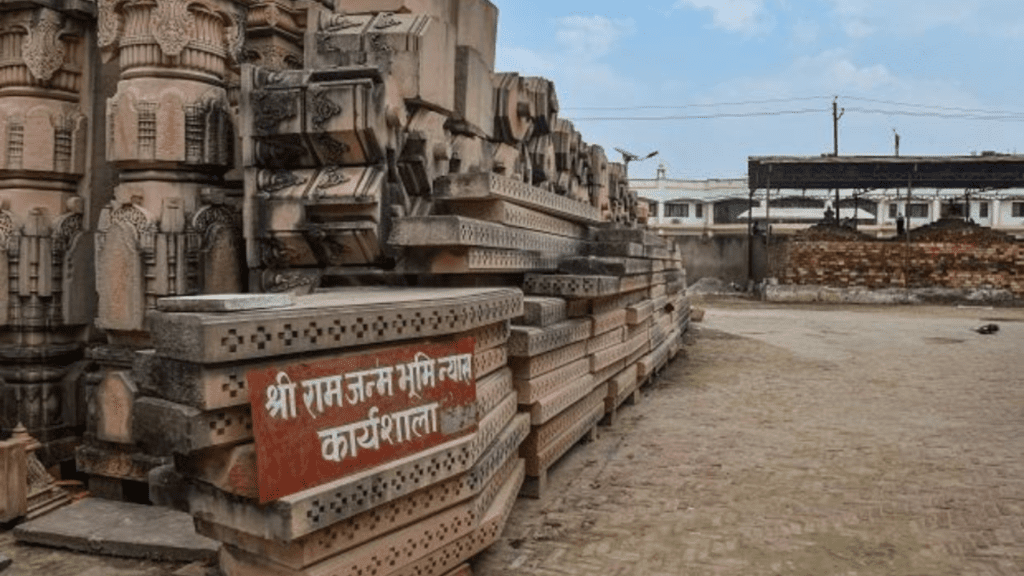
This decision marked a historic moment in Ayodhya’s history, fostering a sense of closure while also igniting hope for communal harmony.
Ayodhya’s cultural heritage is as diverse as its religious landscape. The city has been a cradle of classical music, dance, and literature.
Festivals like Diwali, the festival of lights, are celebrated with great fervor in Ayodhya, drawing pilgrims and tourists from across the country. The city’s vibrant cultural tapestry is a testament to the harmonious coexistence of tradition and modernity.
Ram Mandir
The Ram Mandir, located in Ayodhya, holds unparalleled significance in the tapestry of India’s cultural and religious heritage. The construction of the Mandir at the Ram Janmabhoomi site, where Lord Rama is believed to have been born, marks a historic moment in the country’s history. The Ram Mandir’s architecture is a blend of traditional and modern design, symbolizing the essence of India’s timeless cultural heritage.
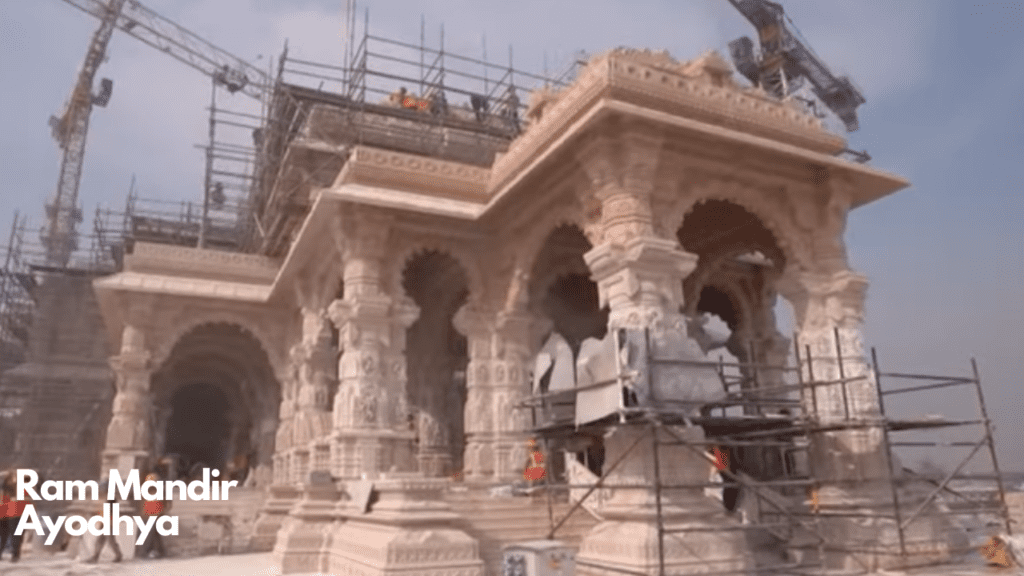
The Mandir complex is poised to become a spiritual and architectural marvel, attracting devotees and tourists from around the world. With a focus on the cultural, religious, and historical importance of the Ayodhya Ram Mandir inauguration, or say Prana Pratistha on January 22, 2024, the day has been deemed special as Hindus revere god Ram in these two towns.
Ram Lalla Virajman, the child form of Ram, an avatar of Vishnu, is the presiding deity of the Mandir. On December 29th, 2023, the selection of the idol of Ram Lalla for the Ayodhya Ram Mandir was done through a voting process.
The Hanuman Garhi
The Mandir dedicated to Lord Hanuman, is perched on a hill and provides panoramic views of the city. A massive four-sided fort with circular bastions at each corner and a Mandir of Hanuman inside is the most popular shrine in Ayodhya. Located in the center of town, it is accessible by a flight of 76 steps. Its legend is that Hanuman lived in a cave and guarded the Janambhoomi or Ramkot.
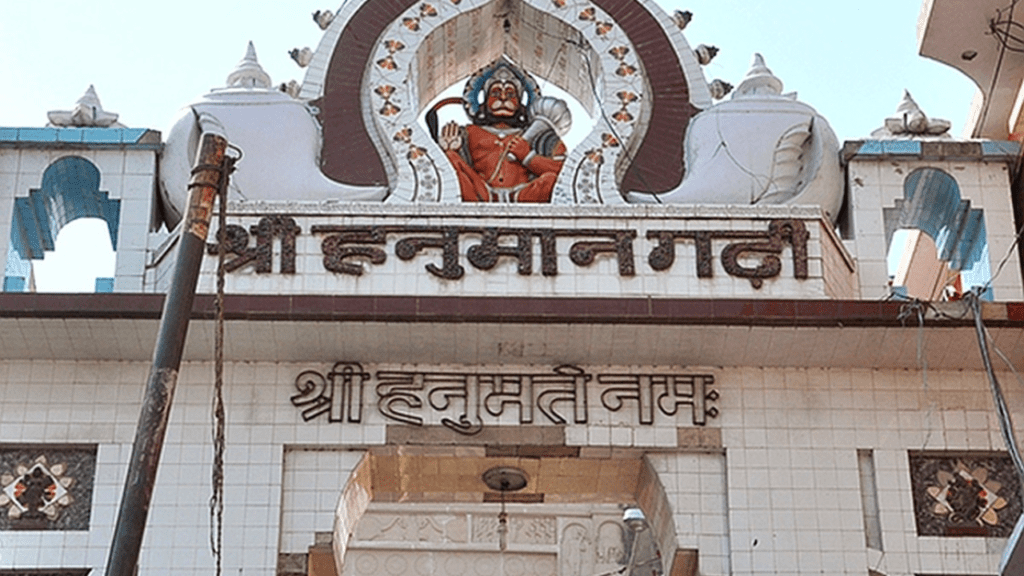
The main Mandir contains the statue of Maa Anjani with Bal Hanuman seated on her lap. The faithful believe wishes are granted with a visit to the shrine. The Kanak Bhawan, believed to be the palace gifted by Lord Rama to his wife Sita, is another architectural gem.
Nageshwarnath Mandir
The Nageshwarnath Mandir in Ayodhya is a sacred Hindu shrine dedicated to Lord Shiva, the Supreme Being in the Shaivism tradition. Located near the Hanuman Garhi Mandir, this ancient Mandir holds significant religious importance in the city’s spiritual landscape.
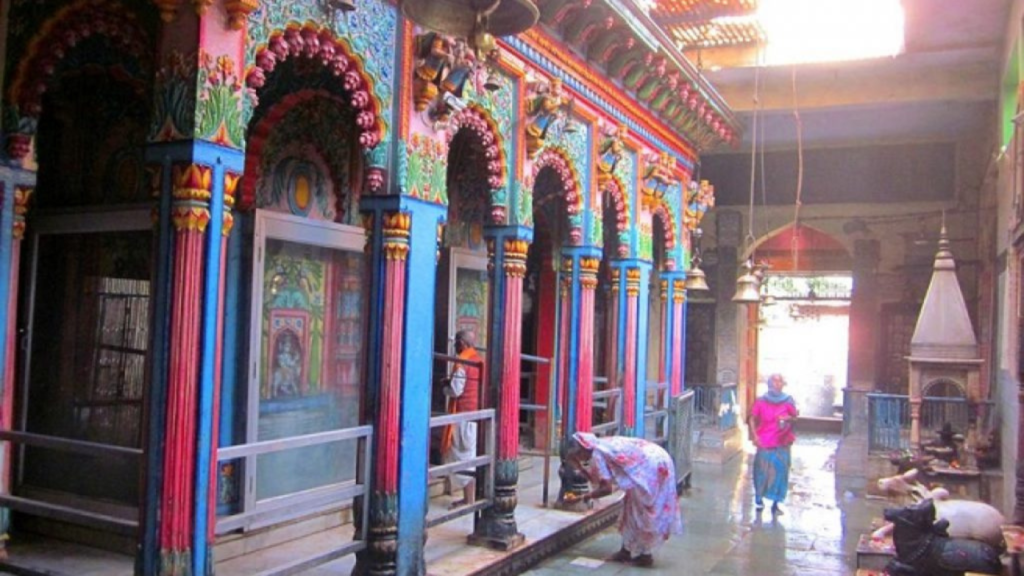
The Mandir of Nageshwarnath was established by Kush, son of Ram. According to the legends, it is said that Kush lost his armlet while bathing in the Sarayu, and it was retrieved by a Nag-Kanya who fell in love with him. As she was a devotee of lord Shiva, Kush built her this Mandir. It was the only Mandir to survive when Ayodhya was abandoned until the time of Vikramaditya.
Ramkot
Ramkot is the main place of worship in Ayodhya, and the site of the ancient citadel of its namesake, standing on elevated ground in the western city. Although visited by pilgrims and devotees throughout the year, it attracts devotees from all over the world on “Ram Navami”, the day of the birth of Ram.
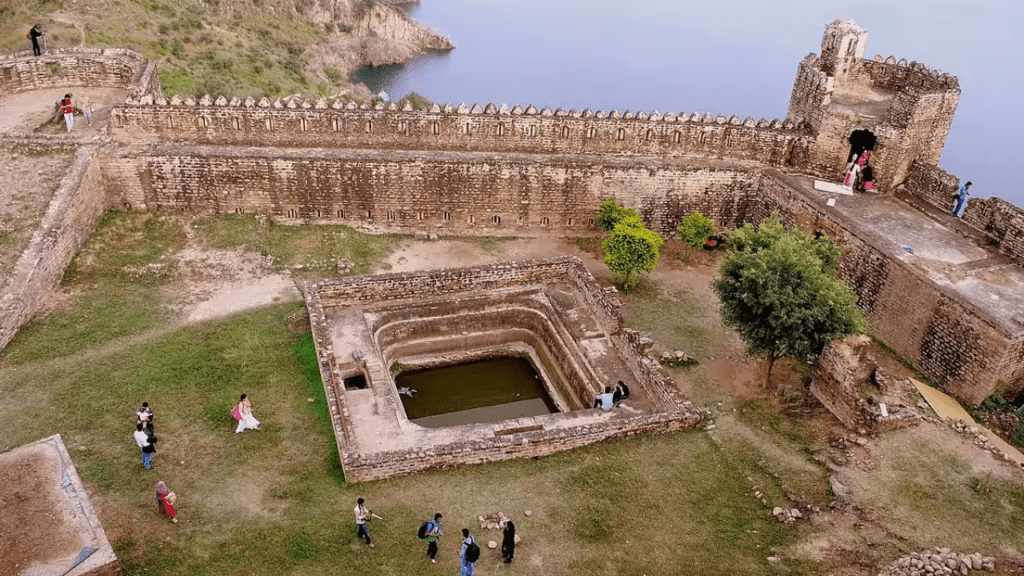
Ram Navami is celebrated with great enthusiasm in the Hindu month of Chaitra, which falls between March and April. Swarg Dwar is believed to be the site of the cremation of Rama.
Ayodhya Deepotsav
Ayodhya Deepotsav, an annual festival celebrated with grandeur and devotion, illuminates the city with the radiance of countless lamps, symbolizing the triumph of light over darkness. In 2022, the Ayodhya Deepotsav promises was mesmerizing spectacle, blending cultural extravaganza, religious fervor, and a profound sense of unity.
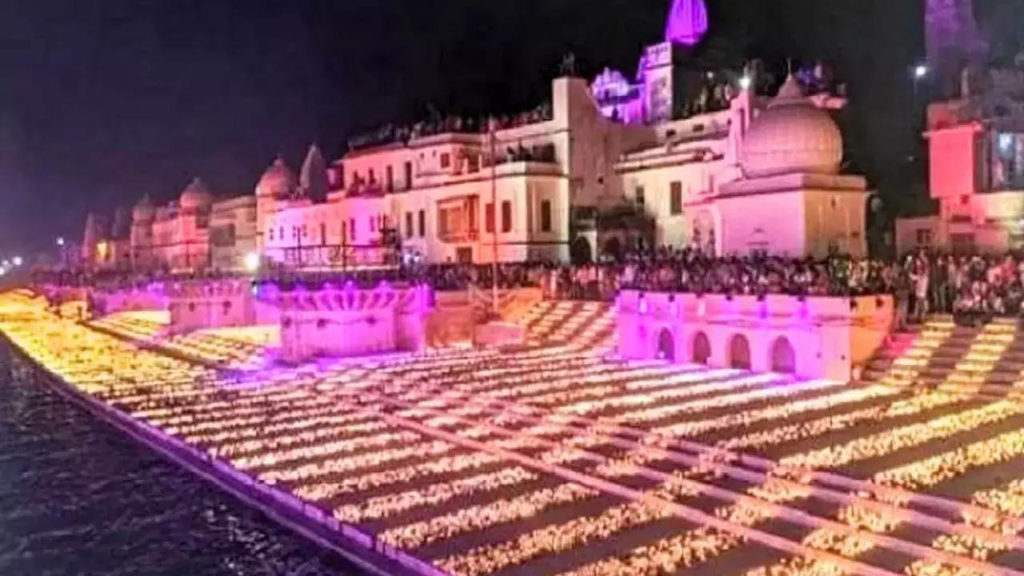
Deepotsav 2022 was celebrated on 23 October to draw the attention of pilgrims, tourists, and devotees from across the country. The festival typically coincides with the festival of Diwali, the festival of lights, adding an extra layer of significance and joy to the celebrations. Ayodhya celebrated its sixth leg of Deepotsav 2022 with nearly 15 lakh diyas being laid across several ghats in the city. According to reports, Ayodhya again entered the Guinness Book of World Records with a lighting up of more than 15 lakh diyas
Railway Station Of Ayodhya
Ayodhya Junction railway station which is officially named as Ayodhya Dham Junction railway station. The station is near Faizabad Junction railway station on the Lucknow–Ayodhya–Varanasi line. Another line to Gorakhpur crosses the Saryu River to the north and then heads east from Mankapur Junction.
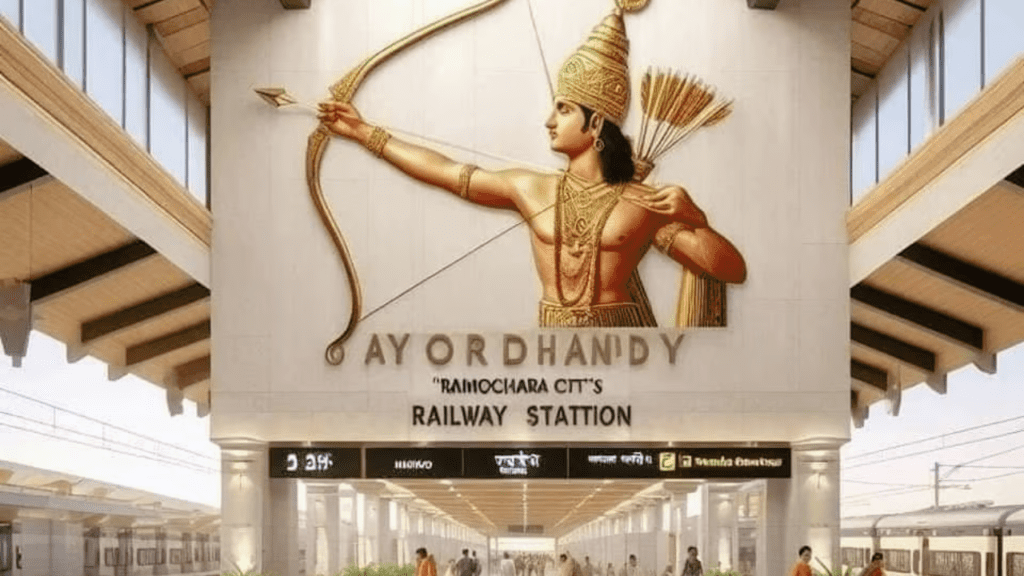
The first Amrit Bharat Express of India, from Darbhanga–Anand Vihar Terminal Amrit Bharat Express, also runs with a stop at Ayodhya. In the future, as the station expands, more operations will be facilitated in the station, much more than what it is at present.
A new four-lane road has been built that has connected the station with the nearby highway passing through the city as the bypass highway, along with the existing road from the city premises, for greater and better connectivity. The station is equipped with basic facilities such as waiting rooms, ticket counters, and refreshment stalls.
The infrastructure is designed to cater to the needs of both local passengers and those traveling through the city. Ayodhya Junction is strategically located to facilitate easy access to the city’s prominent landmarks, including religious sites and tourist attractions.
Hotels in Ayodhya
Below are some of the top hotels in Ayodhya city
1. Natraj Homes- Hotel:- This hotel is a three-star hotel located in Ayodhya 15/4/7 Sapt Sagar colony, Near Chhoti Deokali Mandir. Located in Ayodhya, 10 km from Faizabad Railway Station, this hotel features views of the garden. The hotel features room service and a 24-hour front desk for guests. The rooms at the hotel are fitted with a seating area, a flat-screen TV with satellite channels, and a private bathroom with free toiletries and a shower. The Starting price of the hotel is Rs 2,249.
2. The Ramay Palace:- This hotel is a four-star hotel located at Asharfi Bhawan Chauraha Hotel The Ramay Palace, 224123 Ayodhya. This hotel offers room service and a 24-hour front desk. The hotel provides a terrace and guests can make use of free WiFi and free private parking. At this property, rooms are equipped with a balcony with a city view. At Hotel The Ramay Palace, all rooms have air conditioning and a flat-screen TV. The Starting price of the hotel is Rs 3,349.
3. Ayodhya INN:- This is a two-star hotel located in Ramkot Ayodhya. The accommodation will provide guests with air-conditioned rooms offering a desk, a safety deposit box, a flat-screen TV, a terrace, and a private bathroom with a shower. At Ayodhya Inn, the rooms are equipped with bed linen and towels. A vegetarian breakfast is available every morning at this property. The Starting price of the hotel is Rs 2,250.
4. Ayodhya Residency:– This is a Four-star hotel located at Durahi Kunwa Behind Shri Ramjanmabhoomi Ayodhya. This hotel offers room service and a 24-hour front desk. There is a terrace and guests can make use of free WiFi and free private parking at this property. The Starting price of the Hotel is Rs 2,250.
5. Hotel Raghupati:- This is a three-star hotel located Near the Bank of Baroda and the State Bank of India Babubazar Ayodhya (U.P.), 224123 Ayodhya. The property will provide guests with air-conditioned rooms with a desk, a kettle, a fridge, a toaster, a safety deposit box, a flat-screen TV, a terrace, and a private bathroom with a shower. At this hotel, each room comes with bed linen and towels. The Starting price of the hotel is Rs 1,850.
How to reach Ayodhya city
Before planning your journey, it’s recommended to check the current travel conditions and transportation options. Ayodhya is well-connected by road, railways, and air.
By Air:- The nearest airport to Ayodhya is the Faizabad Airport, which is approximately 6 kilometers away. However, this airport may have limited connectivity. Lucknow airport is a major airport with better connectivity which is approximately 140 Km from the city.
By Train:- Ayodhya has its railway station, known as Ayodhya Junction (AY), which is well-connected to major cities in India. From the station, you can hire or use local buses cabs, or taxis.
By Road:- Ayodhya is well-connected by road to various cities in Uttar Pradesh and neighboring states. Regular bus services operate from cities like Lucknow, Varanasi, Allahabad, and other nearby towns. NH 28 passes through Ayodhya connecting Lucknow, Ayodhya, Gorakhpur, and Barauni.
Frequently Asked Questions
Where is Ayodhya?
Ayodhya is a city situated on the banks of the Sarayu River in the Indian state of Uttar Pradesh.
When is the Ayodhya verdict 2019?
Ayodhya Verdict was on 9th November 2019.
How Many years did Rama rule Ayodhya?
30 Years and 6 Months.
Where is Ayodhya Ram Mandir?
It is located at Ram Janmabhoomi, Ayodhya, Uttar Pradesh
Ayodhya was the capital of Which kingdom?
It used to be the capital of the ancient Kosala Kingdom.
When will Ayodhya Mandir be ready?
According to the Ayodhya Ram Mandir, the entire construction is poised for completion by January 2024.
Which river flows in Ayodhya?
The Saryu River flows in Ayodhya.
How many days are enough to visit Ayodhya?
3 days are enough to visit Ayodhya.
When will Ayodhya Mandir be ready?
According to the Ayodhya Ram Mandir, the entire construction is poised for completion by January 2024.
What is Ayodhya Verdict?
The final judgment in the Supreme Court was declared on 9 November 2019. The Supreme Court ordered the land to be handed over to a trust to build the Hindu Mandir.
How far is Ayodhya From Varanshi?
The distance from Ayodhya to Varanasi is 220 Km.
How many days does it take to reach Ayodhya from Sri Lanka?
On checking the distance and the time taken by walking to cover that distance is 514hrs. it means approximately 20 days.
Who Ruled Ayodhya After Ram?
Lav and Kush Son Of Lord Ram. Lav and Kush were the twin sons of Rama and his wife Sita. Lav ruled south Kosala while Kush ruled north Kosala, including Ayodhya.
When did Ram return to Ayodhya?
Diwali is the day considered that Ram, Sita, Lakshman, and Hanuman reached Ayodhya after 14 years in exile after Ram’s army of good defeated demon king Ravana’s army of evil. The return of Ram to Ayodhya was celebrated with his coronation. It is called Rama Pattabhisheka.
In which month Ram return to Ayodhya?
In the month or Kartik.
How to reach Ayodhya by Train?
Ayodhya has its railway station, known as Ayodhya Junction (AY), which is well-connected to major cities in India. From the station, you can hire or use local buses cabs, or taxis.
How to reach Ayodhya by Flight?
The nearest airport to Ayodhya is the Faizabad Airport, which is approximately 6 kilometers away. However, this airport may have limited connectivity. Lucknow airport is a major airport with better connectivity which is approximately 140 Km from the city.
Ayodhya is Situated in which state?
In the Indian state of Uttar Pradesh.
Sri Lanka to Ayodhya distance
The distance from Sri Lanka to Ayodhya is 3,318 Km.
Varanasi to Ayodhya train?
There are several trains available from Varanasi to Ayodhya that run daily you can easily check out the trains and book your tickets according to that through IRCTC’s official website.

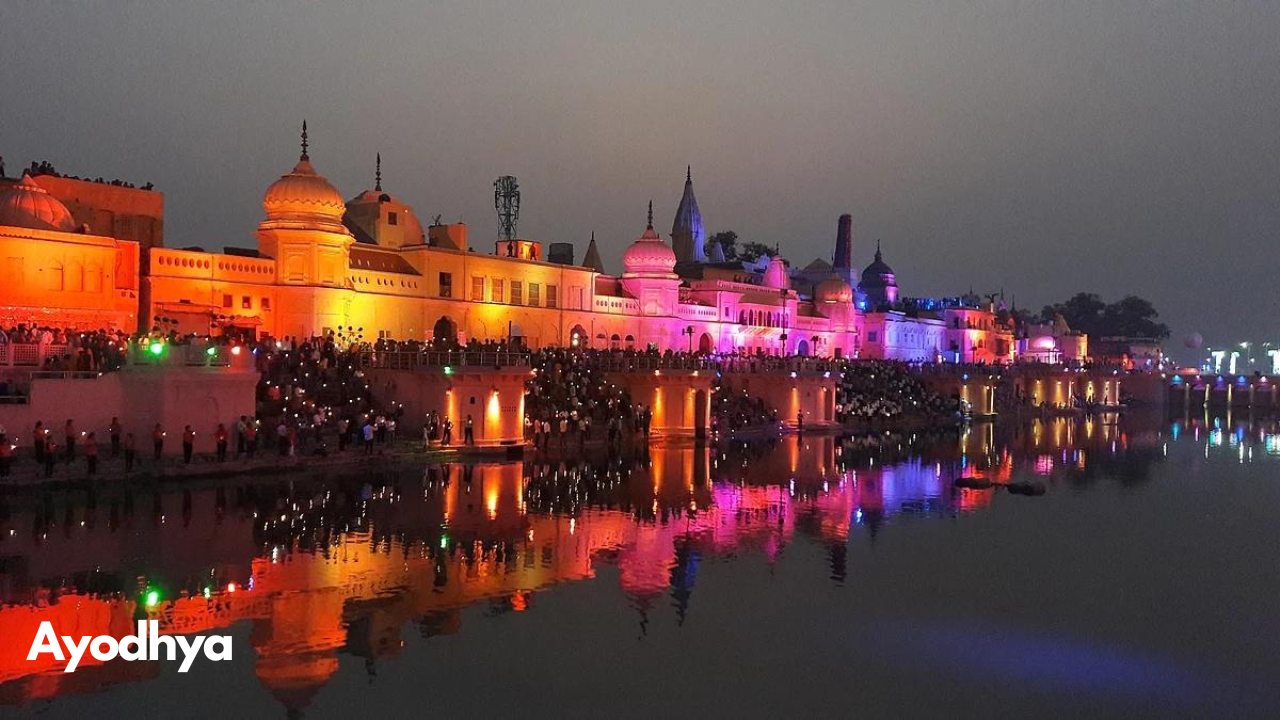
It is very helpful and informative. It helped me alot and also increased my knowledge.